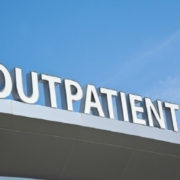Cap Rates On The Rise For Net-Leased Medical Market
Medical uses continue to migrate away from their traditional homes on hospital campuses to retail-oriented sites.
Even as they are overshadowed by non-investment grade property volume, this “medtail” trend is growing in popularity among investors, sending cap rates up.
Year-over-year cap rates on single-tenant, net-leased medical properties were up by 22 basis points at the end of Q3 2018, according to a new report issued by The Boulder Group, a boutique real estate investment firm specializing in net lease property investments. The report, which looked at medical properties priced below $10 million, indicates that the third quarter 2018 cap rate was at 6.47 percent, versus 6.25 percent in the third quarter 2017.
“The increase in cap rates can be attributed to a higher concentration of properties located in secondary markets as well as the high percentage of non-investment grade tenants within the net lease medical sector,” said Randy Blankstein, president and founder of The Boulder Group.
These are favorable cap rates compared to the overall net lease market, though the year-over-year spread has slightly expanded. The current cap rate for general net lease properties is 6.38 percent, 9 basis points lower than net lease medical properties. This time last year, the spread was 5 basis points when the overall net lease cap rate was 6.20 percent versus 6.25 percent for medtail.
With a 6 percent cap rate and accounting for more than 55 percent of the supply for the overall net lease medical sector, dialysis-related properties are clearly the most attractive to investors. Newly constructed properties, and those with at least 11 years of remaining lease term, were even lower with asking cap rates of 5.85 percent, compared to 6.47 percent for all medical properties.
The sector is dominated by properties leased to Fresenius Medical Care and DaVita Kidney Care, two well-established, high-credit operators in the space. A Hammond, Indiana DaVita dialysis center sold in an all-cash transaction last month for $2.2 million. In a separate transaction, a DaVita-tenanted property in South Holland, Illinois sold for $3.7 million and a cap rate of 6.03 percent.
According to Blankstein, net lease medical properties typically provide rental escalations throughout the term of their lease, providing investors with an inflationary hedge and a balance to rising interest rates. Additional long-term factors that make medtail properties appealing include the general marketability and attractiveness of properties that are located within a retail corridor.
“The increasing popularity, demonstrated by sales volume and cap rate movement, is due to a variety of immediate and long-term factors,” said Blankstein. “The medical sector, and the specialized services it provides, is widely seen as e-commerce resistant.”
As popular as this sector has become, not all offerings have the same appeal. In the third quarter of 2018, 75 percent of the medical sector consisted of non-investment-grade tenants. Further, there are a considerable number of properties in secondary and tertiary markets. And, as demonstrated by asking cap rates, there is considerable disparity among the varying categories of net lease medical properties with dialysis properties having the lowest at 6 percent and urgent care facilities witnessing the highest cap rate at 7.3 percent.
In looking ahead, through the balance of 2018 and into 2019, Blankstein predicts that the single-tenant net lease medical sector will remain active as the long-term outlook for healthcare-related properties attracts investors.
“Resistance to e-commerce and the country’s aging demographic will keep investor demand strong in the net lease sector,” Blankstein said. “Investors across all profile types will continue to acquire single-tenant medical properties as cap rates remain attractive when compared to the overall net lease sector.”
Around the country, the Midwest’s median asking cap rate of 6.5 percent lags only the Northeast’s 6.6 percent. The South had a net lease medical property median asking cap rate of 6 percent in the third quarter while in the West, asking cap rates averaged 5.5 percent.
Source: REJournals











Leave a Reply
Want to join the discussion?Feel free to contribute!